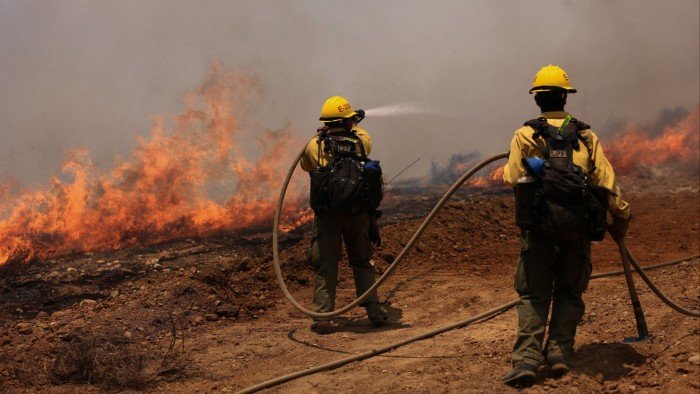Pilita Clark nailed it in her article “Meltdown: how climate shocks could trigger wider market turmoil” (Magazine, Life & Arts, June 28).
For years we have laboured under the illusion that to have a 30-year mortgage was a binding covenant that protected our single largest investment — our home. We’ve spent endless hours hand-wringing over changes in interest rates and debating the merits of a 15-year versus a 30-year rate lock.
But in this new world described by Clark, any deal homeowners thought they had with their mortgage company is today determined by the vagaries of local insurance markets.
I am a longtime resident of northern California, with a family home in the WUI, aka the wildland urban interface. This has sadly become a term used by fire authorities to describe areas in which homes have been built adjacent to unbuilt land often vulnerable to wildfires.
In the wake of recent disasters, many of my neighbours have already received the shocking letter informing them their homeowner’s insurance has been cancelled, only to be followed by the more shocking news that their mortgages were now due and payable because — wait for it — of a failure to maintain homeowner’s insurance.
As Clark explains, this is a reality for an increasing number of Americans. However, if you ask 100 people in California, Oregon, Seattle, Florida or any of the disaster-prone states if they actually have a 30-year mortgage, almost all will reply: “Of course. Why do you even ask?” But now we know what that piece of paper is really worth.
Beyond acknowledging the stark and urgent situation detailed in the article, business leaders must quickly adjust to these inevitabilities and make new plans for where our growing populations build, buy and live.
Bill Green
Managing Partner, Climate Adaptive Infrastructure, Mill Valley, CA, US

